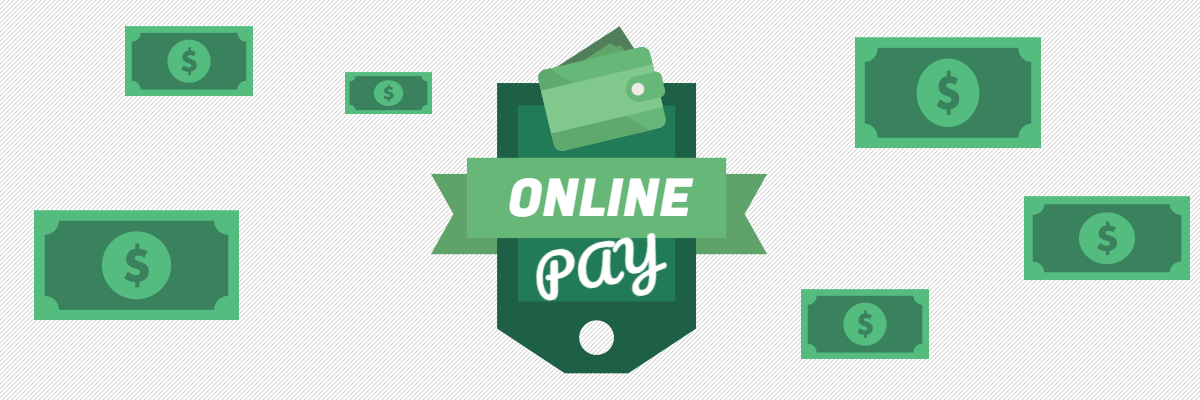
We live in a digital world, there is no doubt about it. We pay for our products with our mobiles, pay our bills online, share money with friends and family through one-click transactions and increasingly our businesses – both those offering products and services, receive payments through the world wide web.
Whether you’re a freelancer, a code and web designer duo or a videographer, handling and receiving money online can be a battlefield if we don’t put the right precautions in place to ensure we get paid for the services we offer.
With multiple avenues available to accept money online, here are the methods you should know along with their advantages and disadvantages that you should know in order to begin collecting online payment more convenient for your consumers:
![]()
Paypal
PayPal is the most commonly known service for transferring money to another individual or business online, with over 188 million accounts actively using the service. Many businesses both big and large online stores use PayPal, with the financial money service that was once owned by eBay only recently disassociating the two apart.
Advantages of PayPal
- Provides a safe service, never revealing your personal details to the buyer.
- If you’re not receiving any money, you don’t have to pay a monthly fee.
- Ability to integrate PayPal with your online store or a purchase page with great customization options.
- A convenient mobile app that allows you to view money going in and out of your account.
- Users can use their debit or credit card with PayPal too to pay for a service or product.
- Ability to set up easy-to-use “one click” pages that users and/or buyers can click to pay for a product or service.
- A fully encrypted service.
- Can be integrated with a website
Disadvantages of PayPal
- It can sometimes take a while for the money to be withdrawn from the account.
- Verification may take a while: when setting up, PayPal withdraws £0.01p from your bank account which has a “code” in the bank statement to use for verification.
- PayPal can be vulnerable to fraud. Users can “charge back” on their product or service if they deem the transaction to be false or if they deem the product/service to have not been received.
CONCLUSION: Good for those who require a service to integrate into their website.
![]()
Apple Pay
Apple Pay is like the new kid on the block, except really he’s been here for two years and only half of us have come across him. Apple Pay is the contactless form of payment technology that can solely be used through the latest Apple devices. Unlike PayPal, it connects straight up with your debit/credit card and works as a bridge in allowing the transaction to take place through the mobile device.
Advantages of Apple Pay
- A lot of payment platforms already allow people to pay using Apple Pay (such as WorldPay, Simplify, Stripe and even website management software like Squarespace).
- When your credit/debit card is already added to your Apple device, paying via Apple Pay on a website or an app is as simple as one-click.
- Many people have an Apple device compatible to use Apple Pay.
- Technically more secure than other methods of online payment that require you to write out your bank details and PIN each time.
- Apple charges banks a small fee, not the merchant.
- Ability to process returns with Apple Pay
- Can be integrated with a website
Disadvantages of Apple Pay
- Not everyone has an Apple device, whilst others may have an older device that isn’t capable of the feature.
- Could be difficult for some to set up themselves on their device.
- Apple Pay for your website may take some technical knowledge, as delving into Apple Developers will be a necessity.
CONCLUSION: Good for businesses whose target audience and consumers are millennials.
![]()

Square Cash
Square Cash is the simplistic money exchanging service for all platforms, which prides itself on the message that “paper currency are now a thing of the past”. Although much less known than other online payment services, its integration with the latest tech proves positive for its future.
Advantages of Square Cash
- You can cash out any money in your account almost instantly.
- People can send across cash even without an account.
- You can create and share a $Cashtag or a cash.me profile to get paid conveniently and in the right place.
- Integrated with the likes of iMessage, allowing users to send you money from their mobile through text.
- Encrypted data to PCI-DSS level 1, as well as fraud protection.
Disadvantages of Square Cash
- Any Business payments you receive has a 2.75% cut
- Cashing out to a bank in “seconds” incurs a 1% fee.
- The service is tailored more to debit cards, with credit cards incurring a 3% fee per transaction.
- You cannot connect directly to a bank account
- You cannot integrate it with a website, it is a stand-alone service.
CONCLUSION: Good for sole traders or freelancers who work casually.
![]()

Sage Pay
Sage Pay is a company that offers simple, flexible and secure payment services through its array of different financial products. One of these is products allows individuals to make payments online to a retailer or a business through a payment gateway service, accepting all the major debit and credit cards.
Advantages of Sage Pay
- Well known, used by many big businesses and organisations around the world. Extremely trusted service.
- Accepts all the different types of credit and debit cards, including payment in 25+ currencies.
- Allows recurring payments to be implemented in and out of the account.
- High encryption and security certification on the service
- Can be easily integrated with your website
- Reporting and analytics management
Disadvantages of Sage Pay
- You must sign up for a pricing plan: Flex – £19.90 a month, Plus – £45 a month, Corporate – Bespoke priced.
CONCLUSION: Good for those who sell services or products as an online store.



